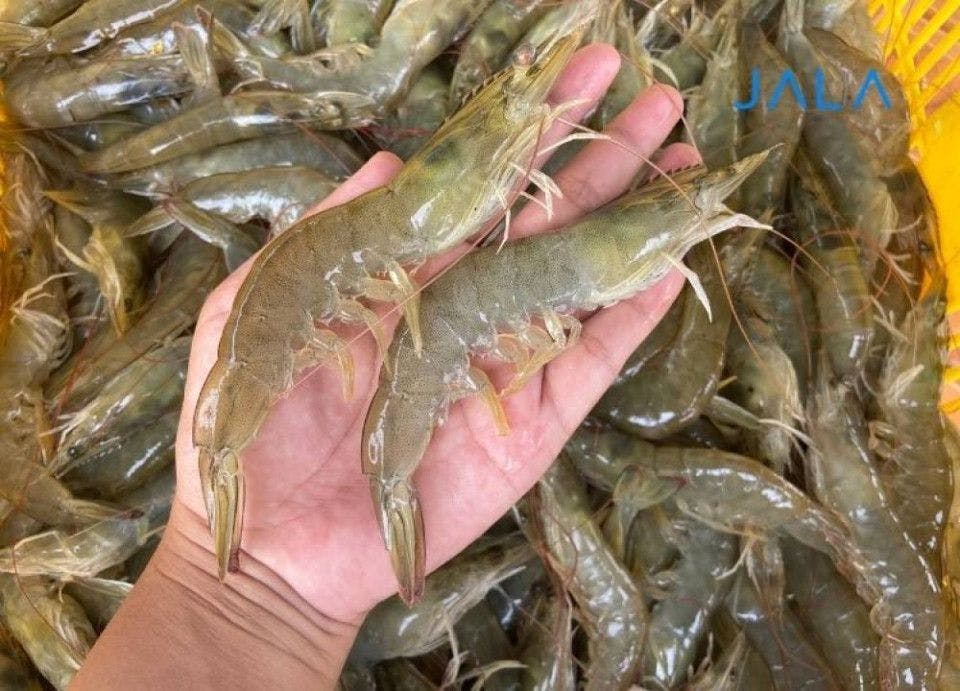
Get to know two types of bacteria in vannamei shrimp farming
Apart from plankton, bacteria are also microorganisms that can determine the success of vannamei shrimp farming. Bacteria in the ecosystem, in the rearing media, or in the shrimp's body can affect the Specific Growth Rate (SGR), Food Conversion Ratio (FCR), or even Survival Rate (SR). This is due to the various compositions of bacteria in ponds that can play a beneficial or detrimental role in the survival of shrimp. It is important for shrimp farmers to know the characteristics, role, and impact of the presence of bacteria in shrimp ponds.
Harmful bacteria in vannamei shrimp farming
Harmful bacteria in vaname shrimp ponds can be known as pathogenic bacteria. Types of these bacteria are mostly from the genus Vibrio sp. which can cause various diseases such as White Feces Disease (WFD), dark spot disease, and Acute Hepatopancreatic Necrosis Disease (AHPND). The presence of these bacteria can come from within the cultivation environment, such as from water and shrimp bodies, or from contamination outside the cultivation environment.
Although it is difficult to eliminate their presence from the cultivation environment, these harmful microorganisms can still be prevented and their abundance suppressed so that the cultivation environment remains balanced so as not to cause harm to farmers. Maintaining water quality, selecting qualified seeds, implementing biosecurity, and applying the right probiotics are the efforts farmers can do to prevent the loss caused by pathogenic bacteria.
Beneficial bacteria in vannamei shrimp farming
Bacteria that can benefit the vannamei shrimp farming process can be known as probiotic bacteria. In addition to suppressing the presence of pathogens, there are also probiotic bacteria that play a role in improving water quality and helping to increase the digestibility of shrimp. One of the roles of probiotic bacteria in maintaining water quality is Nitrosomonas and Nitrobacter, which are able to decompose ammonia and nitrite compounds.
Several types of probiotic bacteria can also form bioflocs. These bacteria actually already exist from the rearing media (pond water), but farmers also add them through the application of probiotics to increase their impact and effectiveness. It is also necessary to pay attention to the method and selection of the right probiotics so that the benefits can be felt.
Successful vannamei shrimp farming
Every component in the vaname shrimp cultivation process must be considered carefully by farmers, one of which is regarding the role of bacteria in the aquaculture ecosystem. The success of vannamei shrimp aquaculture is also determined by how the farmers manage the abundance of bacteria in the aquaculture ecosystem, starting from how to prevent and inhibit pathogenic bacteria to how to apply the right probiotics.
References
Amin, M., Kumala, PRC, Mukti, AT, Lamid, M., & Nindarwi, DD (2022). Metagenomic profiles of core and signature bacteria in the guts of white shrimp, Litopenaeus vannamei, with different growth rates. Aquaculture, 550, 737849.
Avnimelech, Y. (2015). Biofloc Technology - A Practical Guide Book, 3rd edition. Baton Rouge, Louisiana, United States: Aquaculture Society. 285 p.
Froelich, B., Ayrapetyan, M., and Oliver, JD (2013). Integration of Vibrio Vulnificus Into Marine Aggregates And Its Subsequent Uptake by Crassostrea virginica oysters. app. environment. Microbiol., 75:1454-1458.
About the Author
The author of this article is Yoga Pramujisunu. A bachelor of Aquaculture study program, Faculty of Fisheries and Marine Affairs, Airlangga University. The author has experience in identifying the abundance of bacteria found in intensive system vannamei shrimp culture and in exploration of lobster habitat in East Java. The author also has experience in various organizations such as BEM FPK Unair, KAKEMA FPK Unair, HIMAPIKANI Region IV, and Maritim Muda Nusantara, East Java Region.





